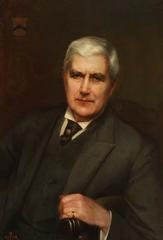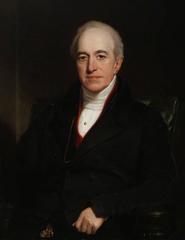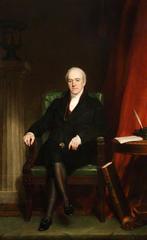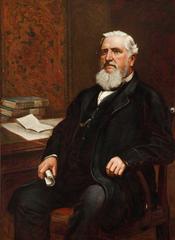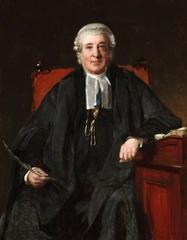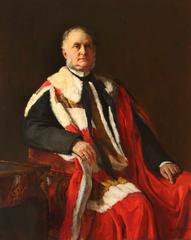
Supreme Court of the United Kingdom: Visiting Hours, Tickets, and Historical Significance in London
Date: 14/06/2025
Introduction
A visit to the Supreme Court of the United Kingdom offers more than a glimpse into the workings of the nation’s highest judicial authority—it’s a journey through British constitutional history, architectural heritage, and the continuing evolution of democracy and the rule of law. Established in 2009, following the Constitutional Reform Act 2005, the Supreme Court symbolizes the formal separation of judicial and legislative powers in the UK. This transformation ensured greater judicial independence and clarified the division of governmental responsibilities (Wikipedia; Judiciary UK).
Housed in the historic Middlesex Guildhall on Parliament Square, the Supreme Court is surrounded by iconic London landmarks, including the Houses of Parliament and Westminster Abbey. The Guildhall itself is architecturally significant, blending neo-Gothic design with intricate decorative details. For visitors, the Supreme Court is not just a legal institution—it’s an accessible, educational, and cultural destination offering free admission, guided tours, interactive exhibits, and a welcoming environment for all (Supreme Court UK; London HQ).
This comprehensive guide details the Supreme Court’s origins, constitutional importance, architectural highlights, visitor facilities, accessibility features, and practical travel tips to ensure a rewarding experience.
Table of Contents
- Historical Background
- Constitutional Significance
- Visiting the UK Supreme Court
- Middlesex Guildhall: History & Architecture
- UK Supreme Court: Visitor Guide
- Accessibility and Inclusivity
- Comparisons with Other London Courts
- Frequently Asked Questions
- Conclusion and Travel Tips
- References
Historical Background
The Evolution of the UK’s Highest Court
The Supreme Court of the United Kingdom was established on 1 October 2009, a major constitutional shift from centuries-old practice. Previously, the final court of appeal was the Appellate Committee of the House of Lords, whose Law Lords held both judicial and legislative roles. The creation of the Supreme Court was motivated by the need for clearer separation of powers and enhanced transparency in the justice system (Wikipedia; Judiciary UK).
Middlesex Guildhall: A Storied Setting
The Supreme Court is located in the Middlesex Guildhall on Parliament Square, a site with legal associations dating back almost a thousand years. The current Guildhall, designed by James S. Gibson and opened in 1913, replaced earlier buildings and has served a variety of legal purposes over the decades. Its transformation into the Supreme Court’s home involved careful restoration and adaptation, combining historic features with modern facilities (Supreme Court UK; Wikipedia).
Transition from the House of Lords
The move from the Palace of Westminster to the Guildhall marked not only a physical relocation but a profound constitutional change. The original Justices of the Supreme Court were previously Law Lords, ensuring continuity in legal expertise and jurisprudence (Supreme Court UK).
Constitutional Significance
Separation of Powers and Judicial Independence
By establishing a distinct Supreme Court, the UK reinforced the separation of powers, making the judiciary institutionally independent from Parliament. This ensures impartiality and supports the democratic principle of checks and balances (Judiciary UK; Baker McKenzie).
Jurisdiction and Role
The Supreme Court acts as the final court of appeal for civil cases throughout the UK and for criminal cases from England, Wales, and Northern Ireland. Its jurisdiction also includes constitutional matters and devolution disputes, reflecting the UK’s complex legal landscape (Supreme Court UK; Wikipedia).
Guardian of the Constitution
Although the UK lacks a single written constitution, the Supreme Court interprets and enforces constitutional principles, ensures public authorities act within legal boundaries, and safeguards individual rights. Its landmark judgments have shaped the development of UK law and public policy (Algor Education; The Law to Know).
Visiting the UK Supreme Court
Visiting Hours and Admission
The Supreme Court is open to the public Monday to Friday, 9:30 AM to 4:30 PM (last entry: 4:00 PM), excluding public holidays and court closures. Admission is free, making it an accessible destination for all (Supreme Court UK).
Guided Tours and Exhibitions
Guided tours provide insights into the Court’s history, architecture, and key cases. Tours require advance booking and a small fee, while access to exhibitions and public galleries is free when the Court is not in session (Supreme Court UK).
Accessibility and Facilities
The Court is fully accessible, with step-free entrances, lifts, accessible toilets, hearing loops, and support for assistance dogs. There are also a café and gift shop on-site (UKSC Diversity and Inclusion).
Getting There and Nearby Attractions
Located on Parliament Square, the Court is easily reached via Westminster Underground Station (Circle, District, Jubilee lines) and several bus routes. Its location makes it ideal for visiting other landmarks such as Westminster Abbey, Houses of Parliament, and Big Ben (Visit London).
Middlesex Guildhall: History & Architecture
Early History and Origins
The site’s judicial associations pre-date the current building, with sanctuary and legal functions linked to Westminster Abbey for centuries. The current Guildhall, a neo-Gothic masterpiece by James S. Gibson, opened in 1913 and has held various legal roles before becoming home to the Supreme Court (Supreme Court UK; Wikipedia).
Architectural Features
Recognized as a Grade II* listed building, the Guildhall features Portland stone façades, pointed arches, intricate stone carvings by Henry Fehr, and original stained glass. The interiors include restored courtrooms, a triple-height law library, and public exhibition areas, seamlessly blending heritage with modern amenities (Save Britain’s Heritage; Supreme Court UK; London Remembers).
Renovation for the Supreme Court
A major renovation in 2007-2009 restored historic features while adapting the building for modern judicial needs, including improved accessibility and public spaces. The conversion sparked conservation debates but ultimately resulted in a blend of restored craftsmanship and contemporary functionality (Wikipedia; Save Britain’s Heritage).
UK Supreme Court: Visitor Guide
Location and Accessibility
Located at Parliament Square, Westminster, London SW1P 3BD, the Supreme Court is accessible by underground, bus, and mainline rail. Step-free access, accessible toilets, and hearing support are provided (UK Supreme Court – Plan Your Visit; London HQ).
Visiting Hours and Entry
Open Monday to Friday, 9:00 AM–5:00 PM (last entry 4:30 PM). Free entry for general visits; guided tours require booking (UK Supreme Court – Plan Your Visit).
Security and Protocols
Expect airport-style security. Large bags and prohibited items are not permitted; there are no storage facilities (GOV.UK – What to Expect).
Guided Tours
One-hour tours cover the Court’s history, architecture, and significant cases. Book via Eventbrite or the official website.
Public Galleries and Court Hearings
Hearings are generally open to the public; check daily schedules online. Live streaming is also available (UK Supreme Court – Plan Your Visit).
Exhibitions and Facilities
Explore permanent exhibitions, the café, and the gift shop. Accessible restrooms and seating are available throughout.
Accessibility and Inclusivity
Physical Accessibility
- Step-free access at all entrances
- Lifts to all floors
- Accessible toilets
- Assistance dogs welcome
Sensory Support
- Hearing loops in all courtrooms
- High-contrast signage
- Large-print and alternative format materials available
Staff and Visitor Support
Trained staff provide respectful assistance and guidance for all visitors (UKSC Diversity and Inclusion).
Digital and Educational Access
- Live-streamed hearings and online resources
- Educational tours and interactive experiences for school groups and visitors
Comparisons with Other London Courts
- Royal Courts of Justice: Architecturally impressive but offers fewer public tours and less interactive engagement.
- Old Bailey: Known for high-profile criminal cases, but with more restricted visitor access and fewer amenities.
- Magistrates’ and Crown Courts: Primarily functional courts, less focused on the visitor experience.
The Supreme Court stands out for its accessibility, educational outreach, and welcoming atmosphere (TGA Mobility).
Frequently Asked Questions
Q: What are the visiting hours?
A: Monday to Friday, 9:00/9:30 AM to 4:30/5:00 PM; check the official website for seasonal changes.
Q: Is admission free?
A: Yes, general admission is free. Guided tours may have a small fee.
Q: Are tours available?
A: Yes, book online in advance.
Q: Is the Court accessible?
A: Fully accessible for mobility and sensory needs.
Q: Can I watch court hearings?
A: Yes, unless restricted; live streams are also available.
Q: Is photography allowed?
A: Only in public areas; not in courtrooms during proceedings.
Conclusion and Travel Tips
Visiting the Supreme Court of the United Kingdom is a unique opportunity to explore a living institution at the heart of British democracy. The combination of constitutional history, architectural splendor, and inclusive visitor services makes it an essential stop for anyone interested in law, history, or London’s rich heritage. Take advantage of the free entry, attend a live hearing, or join a guided tour to gain a deeper understanding of the UK’s legal system. Its central Westminster location also allows you to combine your visit with other major attractions nearby.
For the latest visiting hours, ticketing, and event updates, consult the official Supreme Court website. Enhance your visit with the Audiala app for guided audio tours and accessibility tips, and follow us on social media for ongoing updates and London travel inspiration.
References
- Supreme Court of the United Kingdom – Judiciary UK
- Supreme Court of the United Kingdom – Official Site
- Middlesex Guildhall – Wikipedia
- UK Supreme Court – Plan Your Visit
- UK Supreme Court Tours – Eventbrite
- Supreme Court Diversity and Inclusion
- London Historical Sites – Visit London
- Middlesex Guildhall History and Architecture
- UK Supreme Court Accessibility – London HQ
- UK Supreme Court Official News

